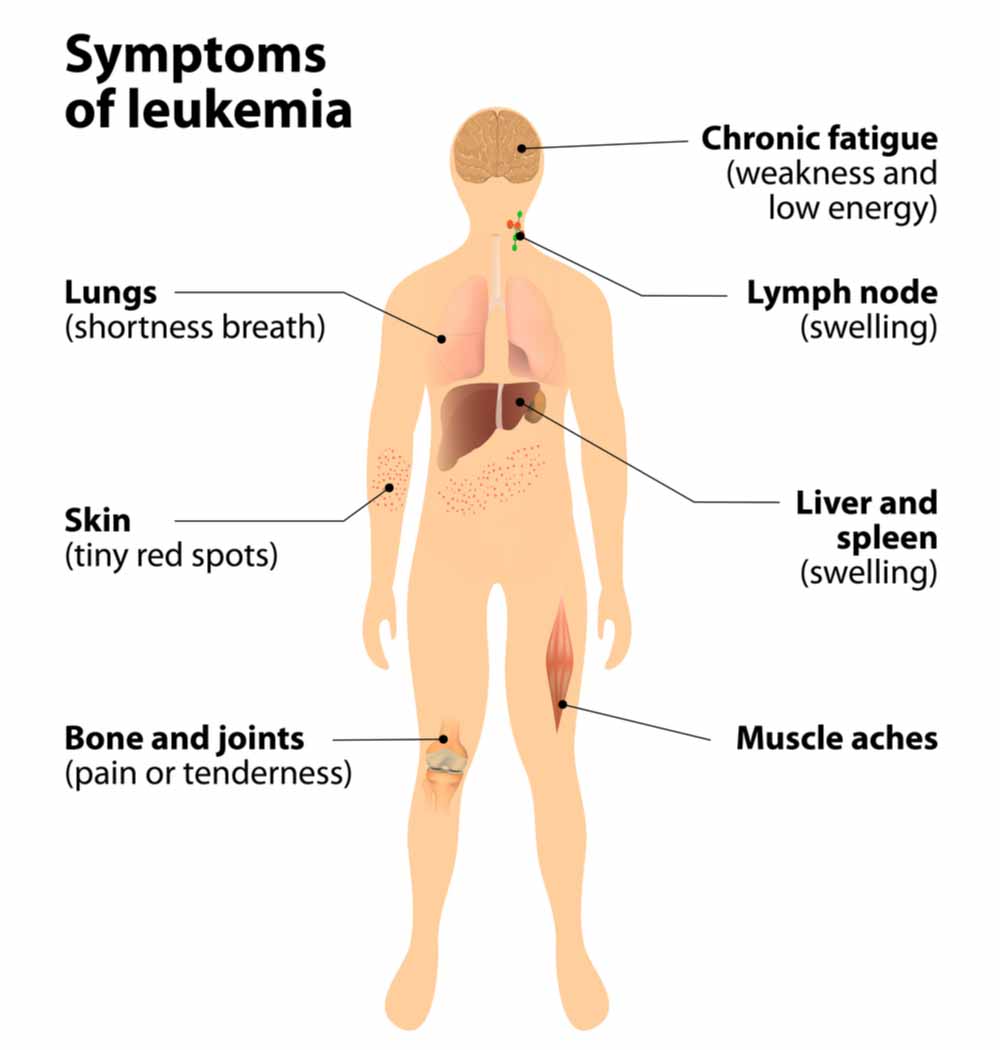Leukemia is a word derived from leukocytes – which means white blood cells. So leukemia is the cancer of white blood cells. White blood cells are further divided into neutrophils, lymphocytes, eosinophils, basophils, and monocytes. Similarly, leukemia is also further divided into various types depending on the type of white blood cells involved.
White blood cells combat infections, toxins, invading pathogens and other diseases. In leukemia, several white blood cells are produced by the bone marrow (spongy material inside the bones). These anomalous WBCs crowd the bone marrow, causes massive accumulation, and get into the bloodstream. A majority of these cells are immature and unlike regular white blood cells, they are unable to protect the body from bacteria, vruses, and other infections.
Leukemia often spreads from the bone marrow to other organs and areas of the body, such as the abdomen, brain, liver, and kidneys. Childhood leukemia has three distinct forms. The most severe type is acute lymphocytic leukemia or ALL that accounts for around 80% or 3 out of 4 cases of childhood leukemia. In ALL, everything stems from the development of faulty, immature cells in the bone marrow. Acute myelogenous leukemia or AML accounts for around 20-30% or 1 in 4 cases of leukemia in children. AML begins with irregular myeloid cell development, which is responsible for forming non-lymphocytic red blood cells, white blood cells, and platelets. Particularly rare is a third form of childhood leukemia called juvenile myelomonocytic leukemia or JMML. It grows in the myeloid cells and accounts for less than 5% of all childhood leukemia cases. It is acute (fast growing) but it doesn’t evolve and spread as rapidly as ALL or AML.
Physicians do not know exactly what is behind most childhood leukemia cases. However, some factors can elevate the chances of having it. Though, bear in mind that getting one of these factors doesn’t automatically mean that a child will suffer from leukemia. In fact, most children suffering from leukemia have no known risk factors.
- The risk for an infant or childhood leukemia increases if he or she has:
- An hereditary disease, such as Li-Fraumeni, Klinefelter syndrome, or Down syndrome
- An inherited disorder of the immune system, including ataxia telangiectasia
- A sibling with leukemia, and particularly an identical twin
- A history of immune system suppression, for example, with an organ transplant
- A history of exposure to elevated levels of radiation, chemotherapy, or chemical substances like benzene
As hard as getting cancer is for a child, it is good to know that most children and teens with leukemia can be treated successfully.
Symptoms of childhood leukemia

In most cases, the cause of childhood leukemia is not determinable. Leukemia symptoms can vary from child to child. Chronic leukemia symptoms typically develop gradually and take years to appear, but those of acute leukemia can suddenly appear and spread fast in the body. Many signs and symptoms of childhood leukemia can be easily confused with other common child disease symptoms. Getting any of the symptoms mentioned below does not automatically mean your child has leukemia.
The following are the common signs and symptoms of childhood leukemia;

